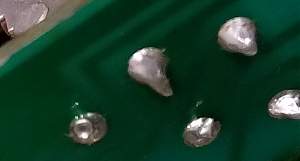Okay - continuity is just checking your bit of wire or component is connected. Put your probes on the ends of a bit of wire - that's continuity. Normally you might measure between solder joins.
Here's measuring pickup resistance via a guitar lead. Neck pickup selected, can see my meter set to 20k and probes held to centre tip and sleeve of the cable it's showing 7.2kohm which is roughly right. Even with your tones and volumes set to '10' measuring pickup DCr (direct current resistance) isn't ideal this way because switches and controls and cable can throw the result. Normally you wouldn't hold the probes to the contact like I am with my fingers either. Your body is 30% water so it is slightly conductive - why you can electrocute yourself very easily.
Whats black and hangs from the ceiling? Careless electrician.
Just a soldering tip, 'tin' all your component or wire joint points. Melt some solder onto the tip of your iron, then hold it to the each bit you're going to join so they have a bit of solder on them. Then when you hold them together and heat them, touching a dob more solder on helps them melt together. Then hold for a few more seconds - don't blow on the join. You want a nice smooth chromy looking join.
This is Marshall factory soldering from 1983, all the joints here are serviceable, but the two bottom ones are not perfect, the lead isn't 100% enveloped. They are all smooth shiny blobs








 Reply With Quote
Reply With Quote
